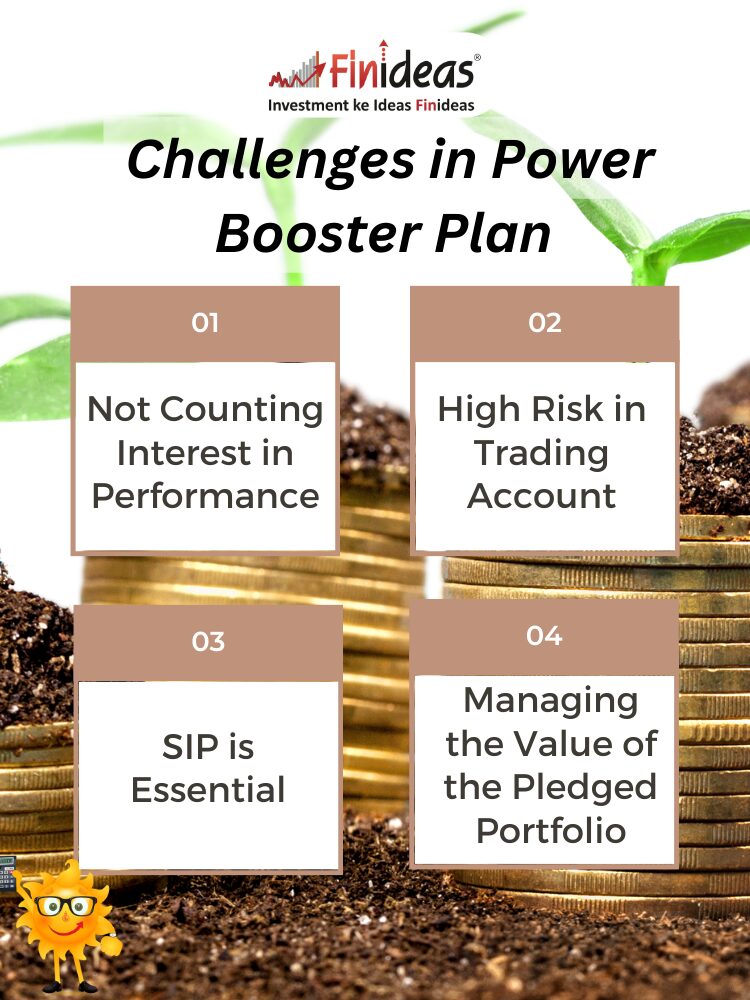Challenges in Index Long Term Strategy
Investment-Linked Trust Schemes (ILTS) offer various plans tailored to different investment strategies and risk appetites. While these plans come with attractive features, they also present distinct challenges. Here, we delve into the challenges and potential solutions for four common ILTS plans: Relax Plan, Basic Plan, Comfort Plan, and Power Booster Plan.
Challenges and Solutions in Relax Plan
- Committing 100% of our initial investment to all other assets ensures that we are fully exposed to potential growth opportunities, maximizing our returns and benefiting from immediate impact. This approach eliminates the need to time the market, reducing the risk of missing favorable entry points and simplifying portfolio management.
- Patience is crucial in our investment strategy, as it is designed to outperform the index in the long run. Market cycles, the power of compounding gains, and historical data all emphasize the importance of a long-term focus. Remaining calm during market fluctuations and avoiding emotional decision-making, such as panic selling during dips, are essential.
- While we may experience underperformance in a range-bound market, paying a premium offers significant protection for our funds during drastic market falls. This premium acts as a safety net, mitigating risks associated with unexpected market crashes and providing stability to our portfolio. The protection we gain ensures the long-term security and sustainability of our investment strategy, allowing us to stay invested with confidence during turbulent periods.
Challenges and Solutions in Basic Plan
- Investors should ensure that the remaining 70% of their funds generate logical returns without incurring risk. Interest-earning investments provide a steady stream of income while preserving capital, ensuring that a significant portion of the portfolio remains stable. By focusing on low-risk, interest-bearing assets, investors can balance their overall risk exposure and maintain a consistent return. This approach not only enhances portfolio stability but also supports long-term financial goals through predictable and reliable earnings.
- It is essential to exclude the interest earned in the trading account and the interest income from the debt portion when evaluating overall performance. This separation ensures a clear distinction between capital growth and income generation, allowing for more accurate performance assessments. By not counting this interest, investors can better understand the true impact of their trading activities and debt investments on their portfolio.
- Managing hedging and forwarding costs is crucial for both the Basic and Power Booster plans. Regular Systematic Investment Plans (SIPs) help in efficiently managing these costs by spreading investments over time and reducing the impact of market volatility. Effective cost management ensures that hedging strategies remain affordable and sustainable, protecting the portfolio from adverse market movements.
Challenges and Solutions in Comfort Plan
- The Comfort Plan necessitates a higher initial investment in the trading account than the Basic Plan but offers the advantage of freedom from regular Systematic Investment Plans (SIPs) for three years. This upfront investment provides investors with a period of stability and potential growth without the need for ongoing contributions, allowing for strategic planning and enhanced portfolio management.
- It is crucial not to include the interest earned in the trading account and the income from the debt portion when evaluating overall performance. By excluding these figures, investors gain a clearer understanding of the actual returns generated from capital appreciation and strategic investment decisions.
- After three years, if the market fails to perform adequately, implementing a regular SIP from the 37th month becomes essential to manage hedging and forwarding costs effectively. This proactive approach ensures that the portfolio remains resilient and adaptable to market conditions, mitigating risks associated with prolonged market stagnation or downturns.
Challenges and Solutions in Power Booster Plan
- It is crucial not to include the interest earned in the trading account and the income from the debt portion when evaluating overall performance. By excluding these figures, investors gain a clearer understanding of the actual returns generated from capital appreciation and strategic investment decisions. This separation ensures a more accurate assessment of portfolio performance, helping investors make informed choices and maintain realistic expectations regarding their investment outcomes.
- As interest is being generated elsewhere on the remaining 90% of the amount, there is inherent high risk associated with the trading account. It is imperative for investors to consider the interest income as part of the overall performance evaluation strategy.
- Implementing a regular monthly Systematic Investment Plan (SIP) is essential for managing hedging and forwarding costs, as well as for taking advantage of smooth intra-year shifting opportunities. A disciplined SIP ensures consistent investment in the market over time, mitigating the impact of market volatility and allowing for strategic adjustments based on prevailing market conditions.
- The exposure in futures is derived from the margin of the pledged portfolio, making it essential to monitor and manage the portfolio’s value carefully. If the value of the pledged portfolio declines, investors may need to pledge additional assets or add funds to the trading account to maintain adequate margin coverage. Managing the pledged portfolio’s value proactively helps in avoiding margin calls and ensures continuity in trading activities without disruptions.
What strategies have you found most effective in managing the challenges of your Index Long Term Strategy plan? Comment down below!
And if you want to know more about Index Long Term Strategy then you must visit our website and can contact finideas.
Happy Investing!
This article is for education purpose only. Kindly consult with your financial advisor before doing any kind of investment..




